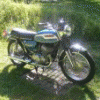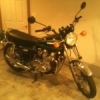Honda Parts $$$$
-
Similar Content
-
- 1 reply
- 2,259 views
-
- 0 replies
- 797 views
-
- 3 replies
- 9,171 views
-
2006 honda cbr600 f4i selling at absolute auction after almost 14 years of owning it
By marlboro man,
- 9 replies
- 2,772 views
-





Recommended Posts
Join the conversation
You can post now and register later. If you have an account, sign in now to post with your account.